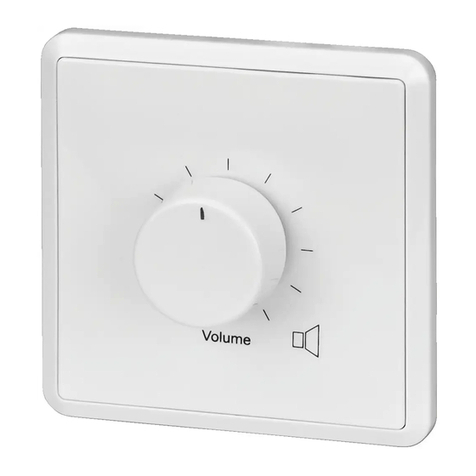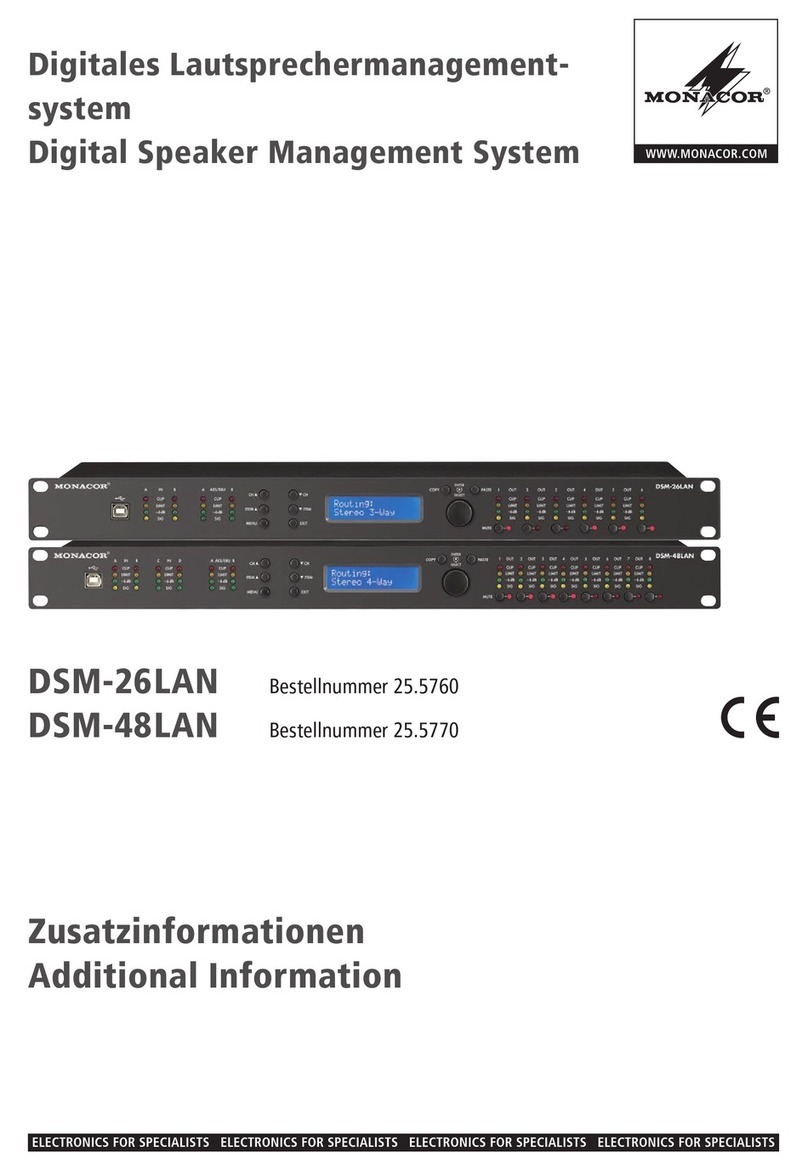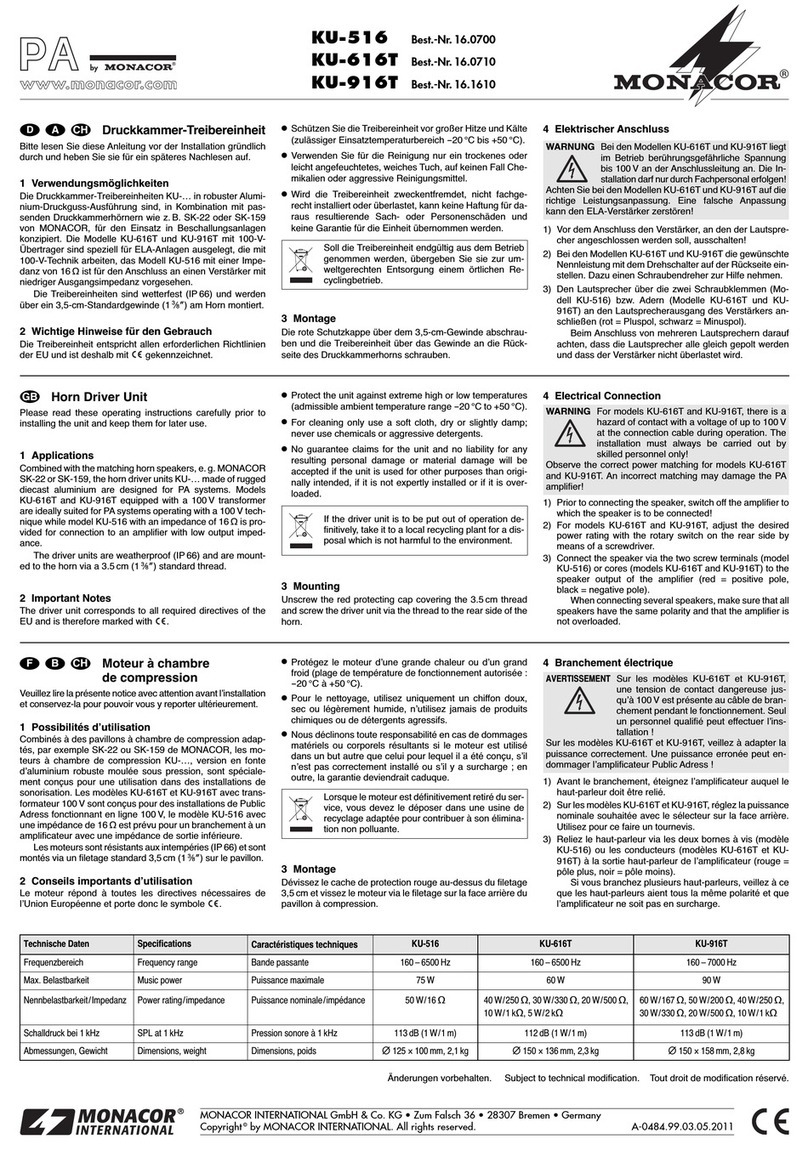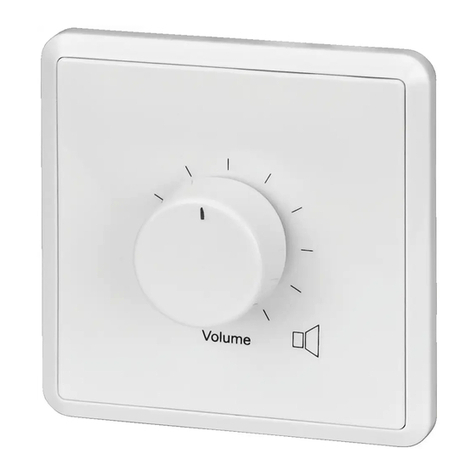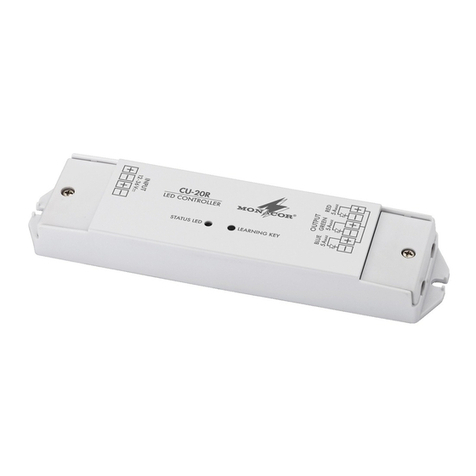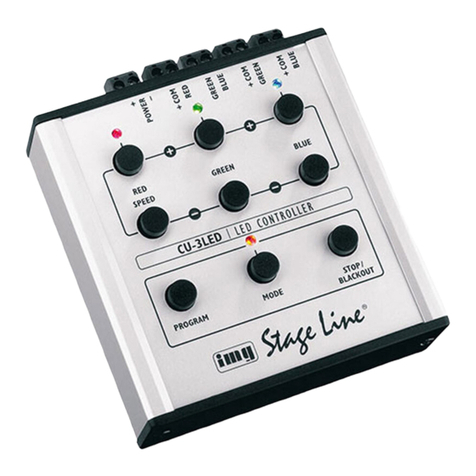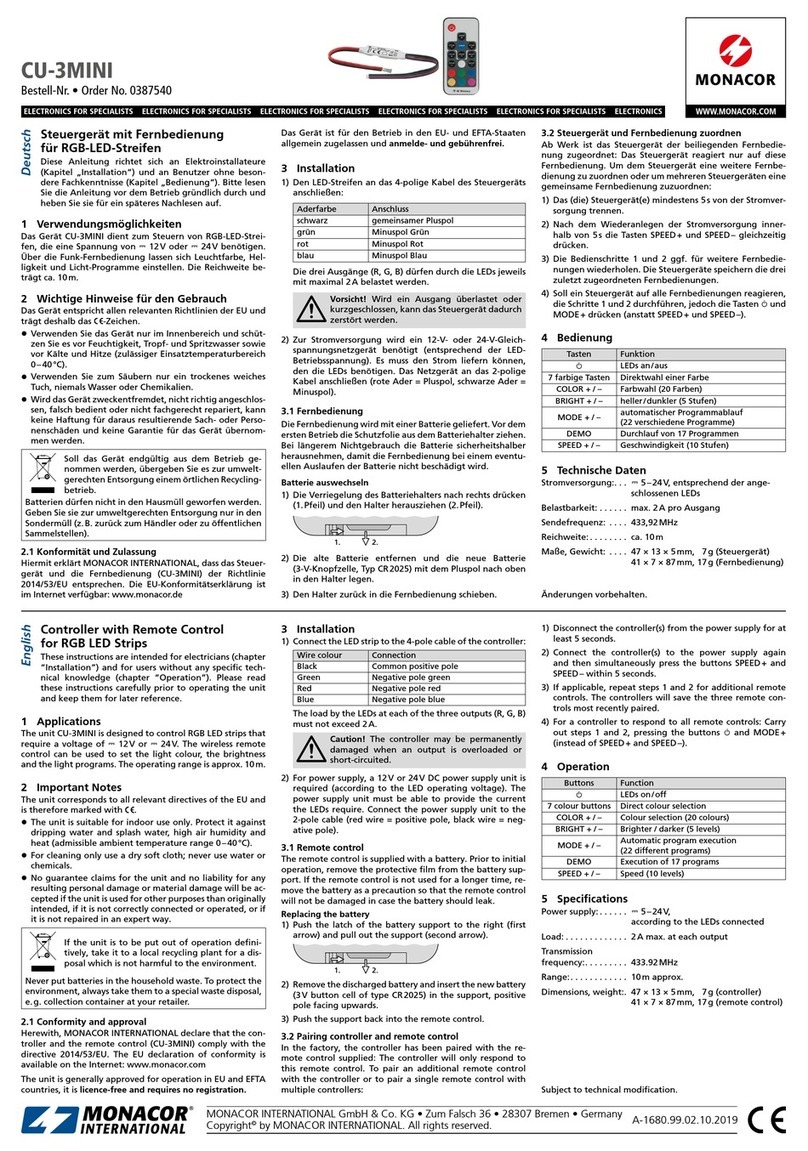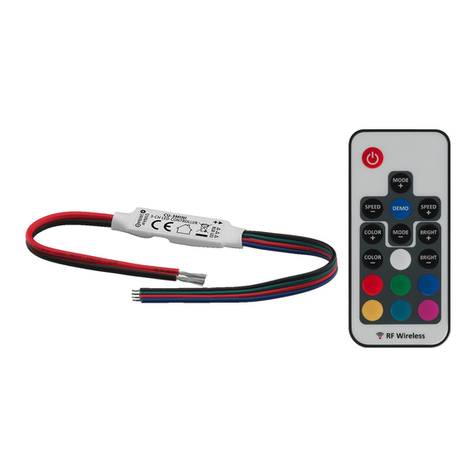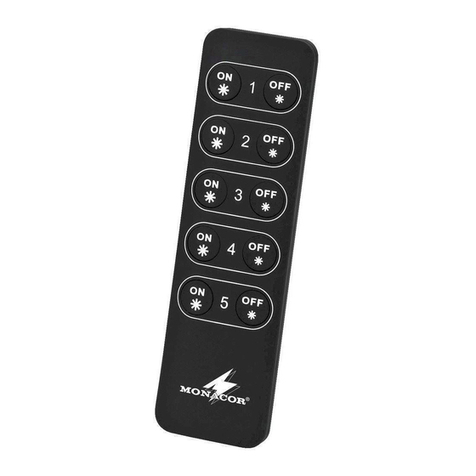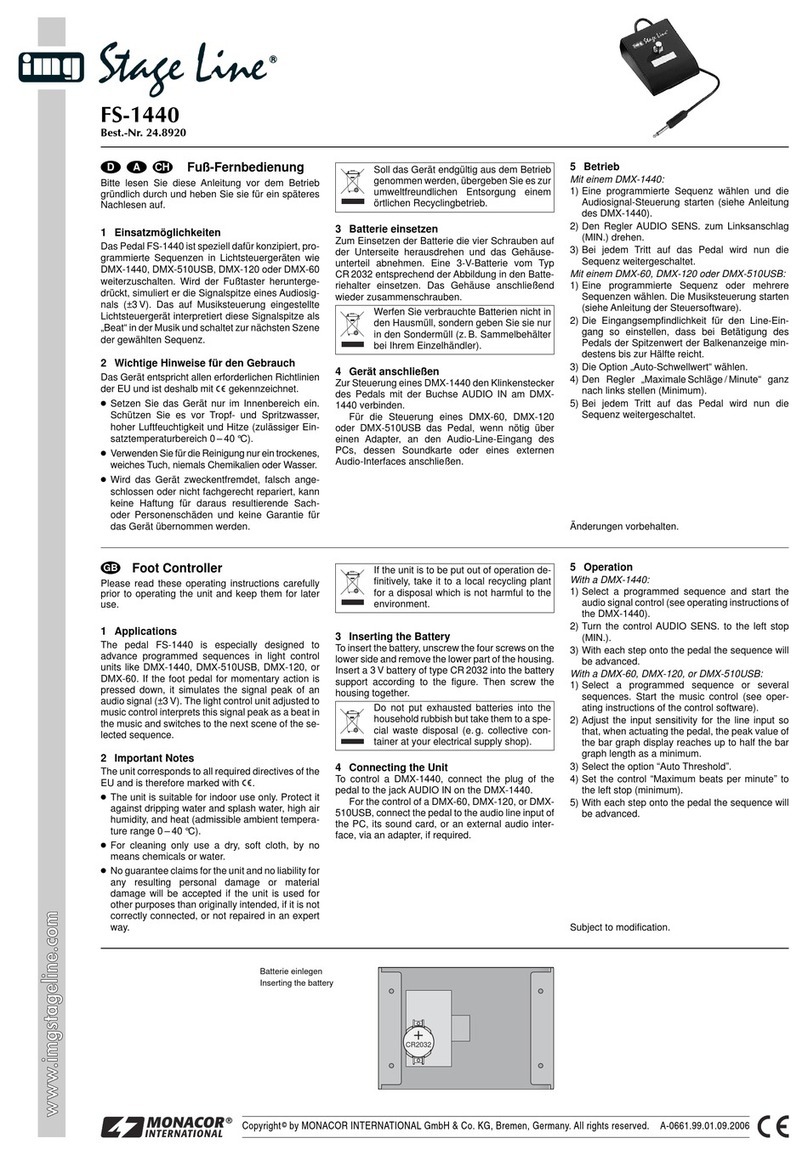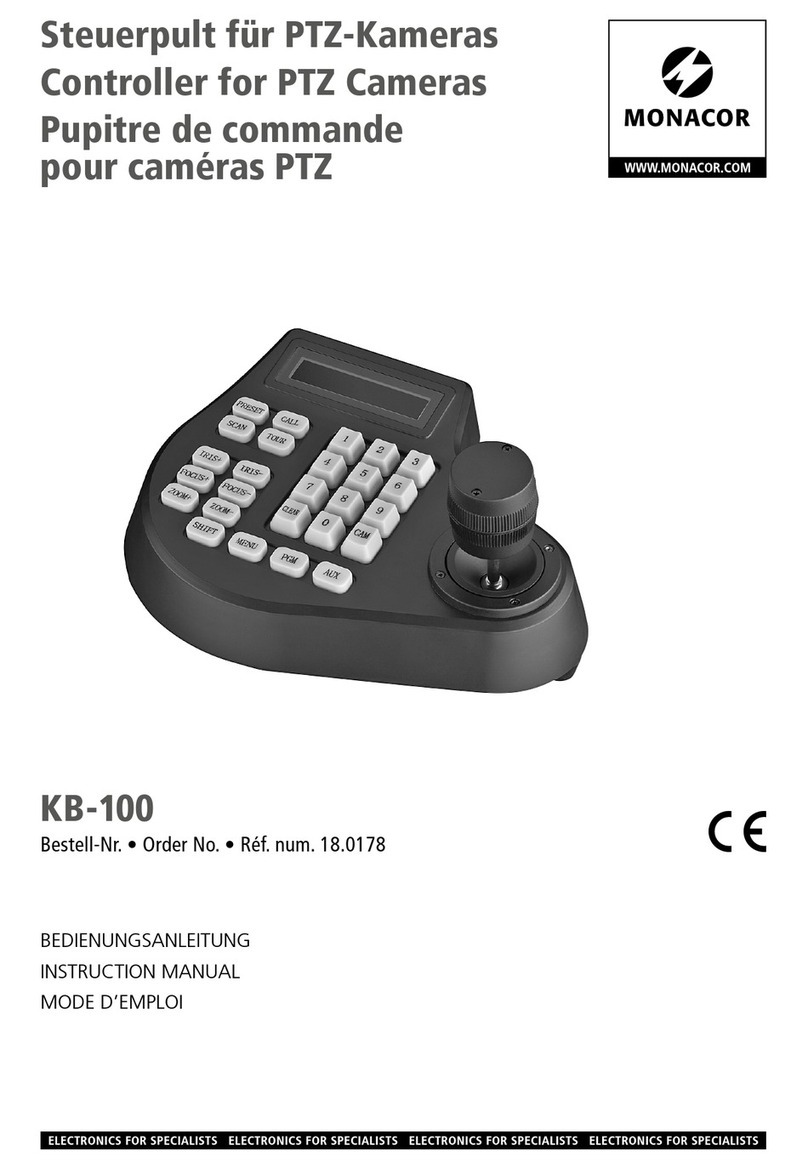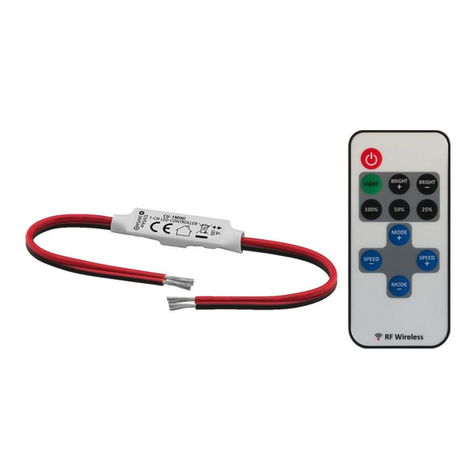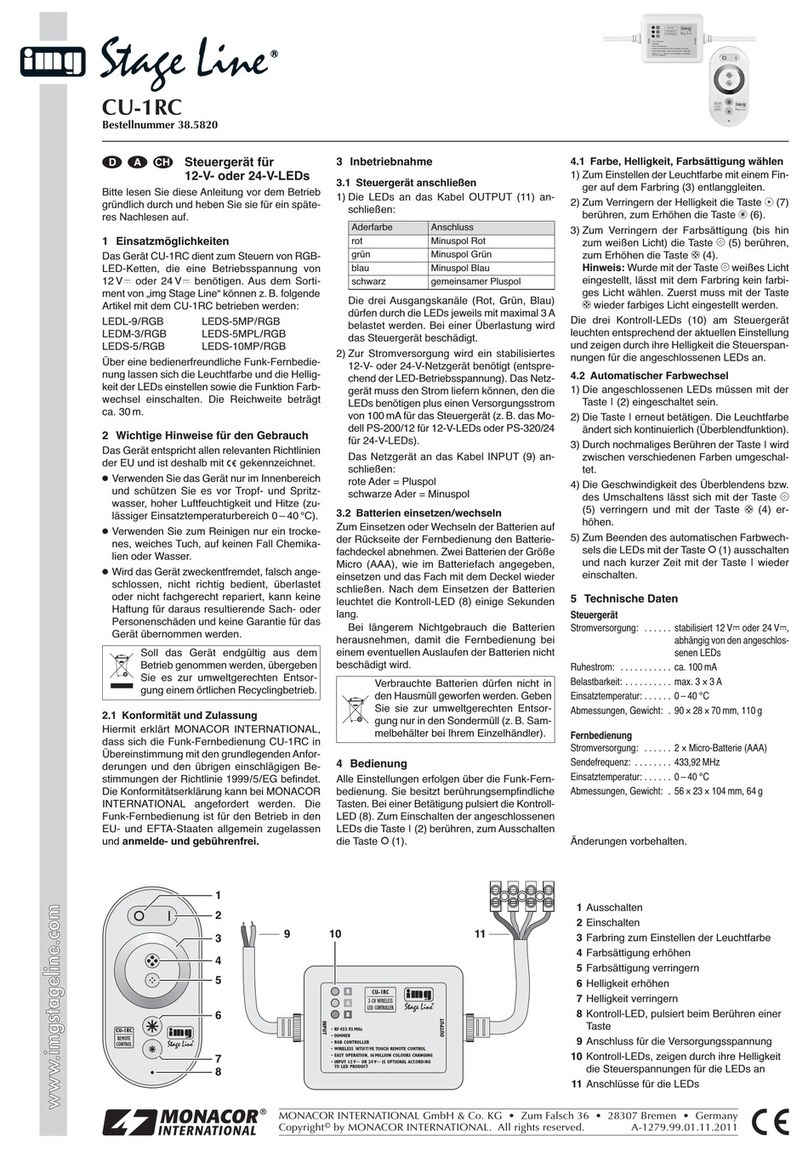
5
PICKUP LEVEL
NOISE DETECTOR
POWER
MIN MAX 30 Hz
40
50
95 170 800
1.2 k
3k
15k
PA-100ANC
FILTER
0.5 Q
1.5
2.5
3.0
3.5
−9 −6 −3 0 dB +3 +6 +9 +12 +15 +18 CLIP ON
WIDTH SIGNAL BYPASS POWER
IN
OUT
PA-100ANC
PICKUP
OUTPUT
POWER
ON
+4 dB/600 Ω
GND
MIC
INPUT
PHANTOM
POWER
−60 dB/BAL
OFF ON
LEVEL
+3
+6
+9
0
-3
-6
-9 dB
REFERENCE
OUT IN
OUTPUT INPUT PICKUP
INPUT
230 V~/50 Hz
24 V /0.15 A
8 96 71 2 3 4 5
20 2117 18 19
13 14 15 16121110
➂
➃
Deutsch
5 Anschlüsse herstellen
Alle Anschlüsse sollten nur durch Fachper-
sonal und unbedingt bei ausgeschalteter
ELA-Anlage und ausgeschaltetem Verstärker
vorgenommen werden!
5.1 Audioverbindungen
Die Audioverbindungen sind in der Abb.1 auf
der Seite 3 dargestellt.
1)
Das Mikrofon, das die Umgebungsge-
räusche aufnehmen soll, mit einem sym-
metrisch beschalteten Mikrofonkabel an
den Noise-Detektor anschließen. Je nach
vorhandenem Stecker am Mikrofonkabel
die XLR-Buchse (18) oder die 6,3-mm-Klin-
kenbuchse (19) verwenden. Beide Buchsen
sind symmetrisch beschaltet.
Benötigt das Mikrofon eine Phantom-
speisung (20V), den Schalter PHANTOM
POWER (17) in die Position ON stellen.
Anderenfalls die Position OFF wählen.
Vorsicht! Den Schalter nur bei ausgeschal-
tetem Verstärker betätigen; durch Schalt-
geräusche erhöht sich die Lautstärke des
Nutzsignals.
2)
Den Noise-Detektor über die Buchse PICKUP
OUTPUT (21) mit der Buchse PICKUP INPUT
(16) des Verstärkers verbinden. Dazu ein
symmetrisch beschaltetes XLR-Mikrofon-
kabel verwenden. (Bei Verwendung eines
asymmetrisch beschaltetem Kabels arbeitet
der Noise-Detektor nicht.) Die Kabellänge
darf maximal 500m betragen.
3)
Das Nutzsignal, das durch den PA-100ANC
geregelt werden soll, auf die Buchse
INPUT (13) geben. Das Signal kann z. B.
ein ELA-Vorverstärker liefern, wie der PA-
1414MX von MONACOR.
4)
Das in der Lautstärke geregelte Nutzsignal
liegt an der Buchse OUTPUT (12) an. Diese
Buchse mit dem Eingang eines ELA-End-
verstärkers verbinden.
5.2 Strom- und Notstromversorgung
1) Soll der Verstärker bei einem Netzausfall
weiterarbeiten, die Anschlüsse DC POWER
(11) mit einer 24-V-Notstromeinheit (z.B.
PA-24ESP von MONACOR) verbinden.
Hinweis: Liegt die 24-V-Spannung von der Not-
stromeinheit an den Anschlüssen DC POWER an,
lässt sich der Verstärker mit dem Schalter POWER
(9) nicht ausschalten. Er schaltet bei einem Netz-
ausfall oder im ausgeschalteten Zustand automa-
tisch auf die Notstromversorgung um.
2)
Zum Schluss das beiliegende Netzkabel
zuerst in die Netzbuchse (10) und dann
in eine Steckdose (230V/50Hz) stecken.
6 Inbetriebnahme
1) Den Verstärker mit dem Schalter POWER
(9) einschalten. Die gelbe Betriebsanzeige
(8) leuchtet. Ist der Noise-Detektor ord-
nungsgemäß mit dem Verstärker verbun-
den, leuchtet auch die grüne Kontrollan-
zeige NOISE DETECTOR POWER (1).
2) Die Taste „SIGNAL BYPASS“ (6) ausrasten
(Position OUT) und am ELA-Endverstärker
die Lautstärke einstellen, die bei durch-
schnittlich lauten Umgebungsgeräuschen
gewünscht wird. In der Position OUT wird
das Nutzsignal nicht geregelt und der PA-
100ANC kann ggf. ausgeschaltet werden
(z.B. bei einem Defekt). Für die weiteren
Einstellungen die Taste „SIGNAL BYPASS“
hineindrücken.
3)
Zuerst den Regler PICKUP LEVEL (2) in
die Position MIN drehen, damit die Laut-
stärke des Nutzsignals nicht durch Um-
gebungsgeräusche erhöht wird. Den
Schalter REFERENCE (15) in die Position
IN stellen und mit dem Regler LEVEL (14)
die minimal gewünschte Lautstärke ein
-
stellen. Diese Lautstärke wird auch dann
nicht unterschritten, wenn keine Um-
gebungsgeräusche vorhanden sind. Die
Anzeige PICKUP LEVEL (5) gibt die maxi-
male Abschwächung des Nutzsignals (−9
bis −3dB) bzw. die minimale Verstärkung
(3 bis 18dB) an, wenn der Regler PICKUP
LEVEL (2) auf MIN steht.
Soll jedoch das Nutzsignal auf Null ge-
regelt werden, wenn keine Umgebungs-
geräusche vorhanden sind, den Schalter
REFERENCE in die Position OUT stellen.
Der Regler LEVEL ist dann ohne Einfluss.
4)
Vorerst den Regler PICKUP LEVEL (2) in
die Position „0“ drehen und den Regler
WIDTH (4) in die Position „0.5“ (geringste
Filtergüte, maximale Bandbreite).
5)
Mit dem Regler FILTER (3) die Frequenz
einstellen, bei der eine Lautstärkeregelung
durch die Umgebungsgeräusche erfolgt.
Die Lautstärkeregelung wird jetzt von der
Anzeige PICKUP LEVEL (5) angezeigt.
6) Jetzt den Regler PICKUP LEVEL (2) so ein-
stellen, dass das Nutzsignal auch bei den
lautesten Störgeräuschen gut zu hören ist.
Sollte die Übersteuerungsanzeige CLIP
(7) aufleuchten, wird das Nutzsignal ver-
zerrt. Es muss dann der Nutzsignalpegel
am Eingang INPUT (13) verringert werden
(z.B. Ausgangspegel am ELA-Vorverstärker
verringern) und dafür die Lautstärke am
ELA-Endverstärker erhöht werden. Es kann
aber auch, wenn möglich, der Regler PICK-
UP LEVEL etwas zurückgedreht werden.
7)
Um die Lautstärkeregelung zu optimieren,
kann die Filtergüte mit dem Regler WIDTH
erhöht werden. Dadurch wird zur Rege-
lung nur ein schmaler Frequenzbereich der
Störgeräusche verwendet.
Bandbreite
des Messfilters =Frequenz [Regler (3)]
Güte [Regler (4)]
8)
Abschließend sollte eine Feineinstellung
wechselweise mit den Reglern PICKUP
LEVEL, FILTER und WIDTH erfolgen.
7 Technische Daten
Blockschaltbild siehe Seite 17
Signaleingang: � � � � � � � � 1 × XLR, sym�
Empfindlichkeit: � � � � � � 0,775V
Eingangsimpedanz:� � � � 30 kΩ
Signalausgang: � � � � � � � � 1 × XLR, sym�
Ausgangspegel: � � � � � � 0,775V
Ausgangsimpedanz: � � � 200 Ω
Mikrofoneingang: � � � � � � 1 × XLR, sym�
1 × 6,3-mm-Klinke,
sym�
Empfindlichkeit: � � � � � � 0,775 mV
Phantomspeisung:� � � � � ⎓ 20V
Klirrfaktor:� � � � � � � � � � � � < 0,3 %
Frequenzbereich: � � � � � � � 20 – 20 000 Hz (−1 dB)
Signal/Rauschabstand: � � > 60 dB
Messfilter
Filterfrequenz:� � � � � � � � 30 – 15 000 Hz
Güte (Q): � � � � � � � � � � � 0,5 – 3,5
Stromversorgung
Netzspannung: � � � � � � � 230V/50 Hz
Leistungsaufnahme: � � � 10VA
Notstromversorgung: � � ⎓24V/150 mA
Einsatztemperatur:� � � � � � 0 – 40 °C
Abmessungen (B × H × T)
Verstärker: � � � � � � � � � � 482 × 44 × 230 mm,
1 HE (Höheneinheit)
Noise-Detektor:� � � � � � � 80 × 60 × 180 mm
Gesamtgewicht: � � � � � � � 3,5 kg
Änderungen vorbehalten.
Diese Bedienungsanleitung ist urheberrechtlich für MONACOR
®INTERNATIONAL GmbH & Co. KG ge-
schützt. Eine Reproduktion für eigene kommerzielle Zwecke –auch auszugsweise – ist untersagt.
